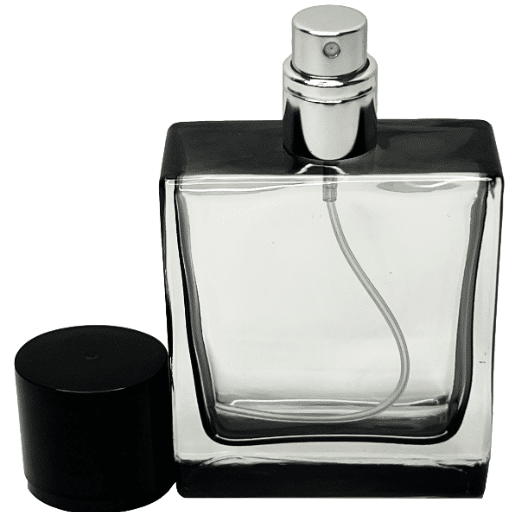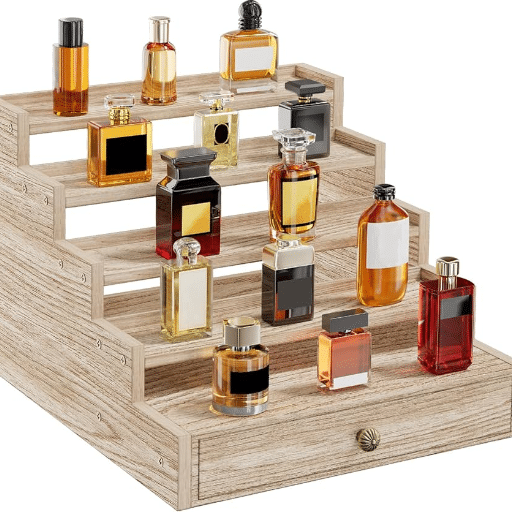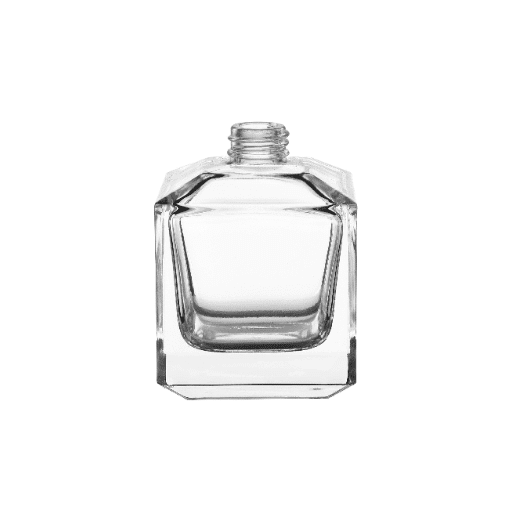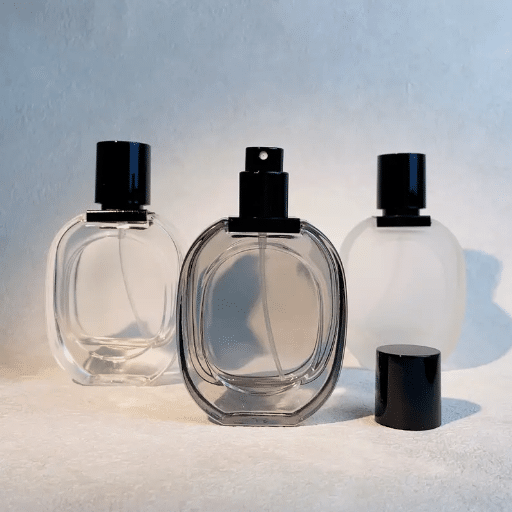Perfume bottle sizes are one of those factors that can influence fragrance choice yet are often overlooked. Some of the more classic bottle sizes are the 1.0 oz, or 30 ml, types, but do we really know what that means? You want to know how long it’ll last, how portable it is, and how it compares to other sizes? This article would then provide valuable insight into it all. We will get into the mechanics of using a 1.0 oz perfume, then go on to further strategy preparation to help you decide better in buying your next perfume. By the time we’re done, you will become well-versed in perfume sizes, thereby adding an extra qualification to your fragrance buying.
Overview of Perfume Bottle Sizes
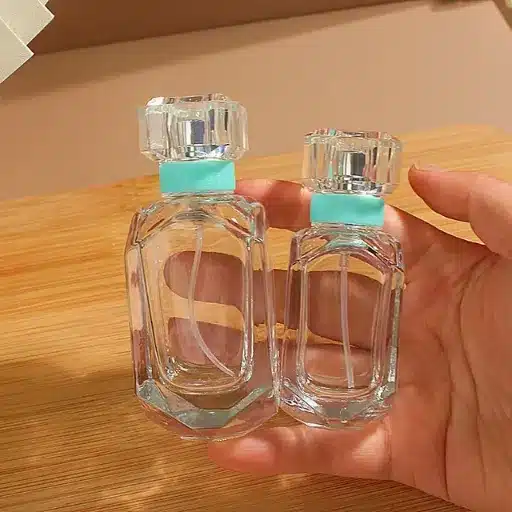
The sizes of the perfume bottles range between 0.5 oz (15 mL) and 3.4 oz (100 mL). In particular, the 1.0 oz (30 mL) size is one of the favored options, as it offers nearly 300 sprays, which can last anywhere from several months to a year, depending on use. Smaller sizes of 0.5 oz are ideal for travel or sampling a fragrance, while 3.4 oz bottles are well-suited for individuals who frequently use their signature fragrances. Such knowledge of sizes helps a buyer decide on the best option for their needs, considering factors such as portability, longevity, or cost-effectiveness.
Common Perfume Bottle Sizes
- 0.17 oz (5 mL): Mostly samples, minis can offer a nice treat to an eager-to-try individual on the verge of committing to a full bottle.
- 0.33 oz (10 mL): Typically sold as either roll-ons or travel sprays, offering the user great portability and liquidity to spray fragrance while on the go.
- 0.5 oz (15 mL): A small size used for extended trials or purchases by seldom-wearing perfume users.
- 1.0 oz (30 mL): A Hispanic size for the regular wearer. It is somewhat easy to carry and lasts nearly 300 sprays.
- 1.7 oz (50 mL): Well-known size for maximum fragrance retention. Enough to accompany daily wear for a couple of months.
- 2.5 oz (75 mL): A little larger than the 1.7-ozer, commonly for those who splurge on fragrance more frequently.
- 3.4 oz (100 mL): The choice for many official fragrance titles, enough for regular use.
- 6.7 oz (200 mL): Large and rare, mostly well-loved by collectors or long-time users for maximum value.
Understanding the 1 Ounce Perfume Size
This 1-ounce (30 mL) fragrance bottle is compact and offers practicality, serving the needs of portability and versatility. The size is excellent for occasional users, scent experimenters, or individuals who want to keep it light on the go. It’s enough to have the scent for moderate use, depending on how much some people would have it lingering for weeks to two months, or perhaps a little more than a month. Being the smaller one means that if one’s choice changes, there remains negligible wastage, adding another plus to the consideration of seasonally rotating or sampling usage.
Comparison with 3.4 oz Bottles
The primary differences between 1.0-oz and 3.4-oz perfume bottles include volume, cost, portability, longevity, and waste management.
| Key Point | 1.0 oz | 3.4 oz |
|---|---|---|
| Volume | 30 ml | 100 ml |
| Cost | Lower price | Higher price |
| Portability | High | Low |
| Longevity | Weeks to months | Months to years |
| Waste | Minimal | Potentially more |
Dimensions and Capacity of a 1.0 oz Perfume Bottle
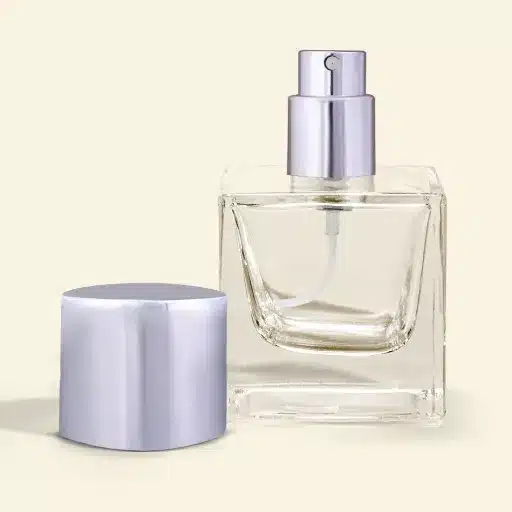
A 1.0-oz perfume bottle typically holds 30 milliliters of liquid and is designed with compact dimensions to prioritize portability. The specific dimensions vary by manufacturer, but bottles are often approximately 3-4 inches in height and 1-1.5 inches in width. This convenient size allows for easy storage in handbags or travel luggage while maintaining sufficient capacity for daily or occasional use over several weeks.
Fluid Ounces to Milliliters Conversion
Converting fluid ounces to milliliters is a straightforward computation, where 1 US fl. oz. equals 29.5735 ml. For standard perfume bottles, we summarize it as duty:
- A 1.0 oz perfume bottle contains approximately 30 milliliters of liquid.
- A 1.7 oz perfume bottle holds approximately 50 milliliters.
- A 3.4 oz perfume bottle is equivalent to 100 milliliters.
The above conversion values are crucial when determining travel sizes and restrictions, especially when carrying liquids in carry-on luggage, as most restrictions stipulate that containers can only be 100 ml or less.
Physical Dimensions of 1.0 oz Bottles
Depending on the design and manufacturing, the physical dimensions of a 1.0-oz perfume bottle can vary slightly. Most typical 1.0 oz (30 milliliters) bottles measure roughly between 3 and 4 inches (7.6 and 10.2 cm) in height, with widths and depths ranging from 1 to 1.5 inches (2.5 to 3.8 cm). These small measurements make 1.0 oz bottles fairly portable and travel-friendly, and more importantly, compliant with the TSA’s liquid size specifications for carry-on luggage.
Size Chart: 1 oz vs Other Sizes
Perfume bottles are generally available in sizes of 0.17 oz, 0.33 oz, 0.5 oz, 1.0 oz, 1.7 oz, 2.0 oz, 3.4 oz, and 6.8 oz.
| Size (oz) | Size (ml) | Height* | Width* | Depth* | Portability |
|---|---|---|---|---|---|
| 0.17 | 5 | ~2 in | ~0.5 in | ~0.5 in | High |
| 0.33 | 10 | ~2.5 in | ~0.5 in | ~0.5 in | High |
| 0.5 | 15 | ~3 in | ~1 in | ~1 in | High |
| 1.0 | 30 | 3-4 in | 1-1.5 in | 1-1.5 in | High |
| 1.7 | 50 | ~4-5 in | ~1.5 in | ~1.5 in | Medium |
| 2.0 | 60 | ~5 in | ~1.5 in | ~1.5 in | Medium |
| 3.4 | 100 | ~5-6 in | ~2 in | ~2 in | Limited |
| 6.8 | 200 | ~6-8 in | ~2.5 in | ~2.5 in | Limited |
*Height, width, and depth are approximate and vary by bottle design.
Duration of Use: How Long Does 1.0 oz Last?
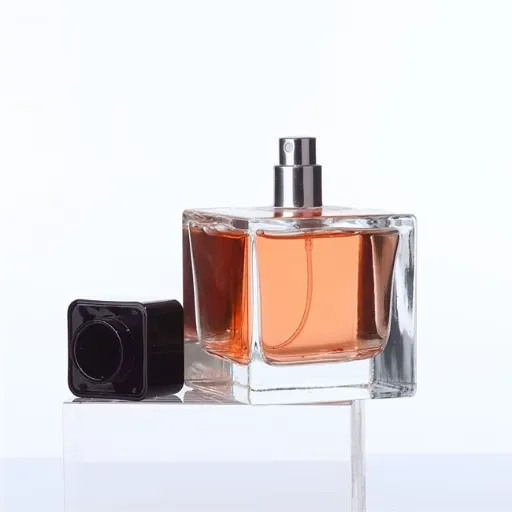
The amount of use of the 1.0 oz tube under consideration depends on the frequency and volume of application. On average, with daily use of approximately 0.03 oz per use, the 1.0 oz container typically lasts around 30-33 days. A slight variation in application per use can affect longevity. For a more precise calculation, try tracking how we use it.
Factors Affecting Usage Duration
- Frequency of Application: The number of times a user applies the perfume daily directly relates to how soon the product is consumed. The more times it is used, the quicker it runs out.
- Volume Per Application: This variable is significant, referring to the amount of perfume applied. People who use a heavy spray or apply it in multiple dabs will burn through their bottle very quickly.
- Bottle Design: Depending on its construction, the size and efficiency of its spray nozzle, or its applicator, influence how much sauce or product is dispensed with each payment. Bigger nozzles will, in fact, account for a lot more perfume from just one spray!
- Environmental Conditions: Other external factors must also be considered, including ecological humidity, temperature, and wind. For example, at high altitudes or with no winds blowing, users feel their perfume fades faster and tend to reapply more.
- Personal Preferences and Activities: Such personal habits as requiring the fragrance in its full strength throughout the day or any activity, which decreases scent intensity (for instance, sport) can gravely affect usage duration.
Sprays Per Perfume: Understanding Usage Rates
When determining the number of sprays per perfume bottle, the standard size of the bottle and the typical volume of a spray are key factors to consider. Thus, a 50ml bottle would have between 600 and 700 sprays, and a 100ml bottle would have between 1,200 and 1,400 sprays. Sometimes, nozzles spray finer mists; in such cases, bottles would have a greater number of sprays compared to bottles with nozzles that produce heavy mists.
Usage habits and preferences have a significant impact on the lifespan of a particular bottle. For instance, if some users spray five sprays from a 50ml bottle daily, the fragrance may last for about 4 to 5 months. Additionally, extrinsic factors such as evaporation resulting from improper storage of the bottle or multiple applications under challenging environmental conditions may further impact actual usage. With an understanding of these variables, consumers can more effectively anticipate how much they will consume, allowing them to make better-informed buying decisions.
Frequency of Use and Concentration Impact
The frequency of use and the concentration of perfume significantly influence its longevity and optimal performance. Perfume concentrations are categorized into different types, such as Eau de Cologne, Eau de Toilette, Eau de Parfum, and Parfum, each defined by its percentage of aromatic compounds. For instance, Eau de Cologne typically contains 2-5% aromatic compounds and may only last a few hours, while Parfum, with a concentration of 20-30%, offers a far more enduring scent profile, often lasting 8 hours or more. Users who apply perfume less frequently, or in smaller quantities, will naturally extend the lifespan of a bottle, especially when using higher concentrations.
Conversely, individuals who opt for lower concentrations or reapply fragrance multiple times daily due to the quick dissipation of scent can experience faster bottle depletion. Furthermore, modern search data reveals that queries regarding “how long does perfume last” or “best concentrations for lasting perfume” are becoming increasingly common, underscoring the importance of understanding these factors in making informed buying decisions. Conclusively, tailoring usage patterns to the concentration and occasion can ensure both practical application and cost-effectiveness.
Choosing the Right Size for Your Needs
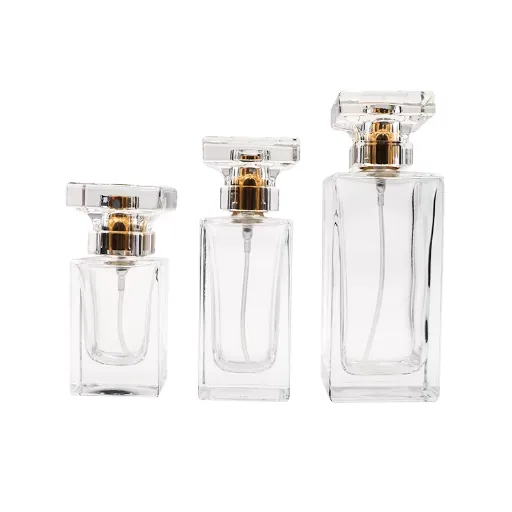
When purchasing a perfume, the factors considered before making a purchase include expected usage, storage, and environmental conditions. For instance, larger bottles, such as 3.4 oz or 100 ml, are economical and even sufficient for daily use or as a signature scent. Small bottles, on the other hand, from 1 oz and travel sizes, are to be carried around. Conversely, smaller-size options are recommended to prevent spoilage, as prolonged storage, especially with exposure to light and air, can degrade the fragrance quality. Keep an eye on how you live your life and your preferences before deciding on a size that suits your needs for optimal value.
Assessing Personal Usage Patterns
When assessing personal perfume usage patterns, it is essential to consider both the frequency with which the wearer uses a fragrance and the occasions on which it is worn. For daily or frequent use anyone would prefer larger bottles of perfume, as this keeps the supply going. For occasional applications, smaller sizes are suitable to minimize wastage due to evaporation or degradation. Also, consider whether the user is more of a one-fragrance kind of person or someone willing to experiment. A person with a single dedicated scent would do well to invest in larger bottles, while someone who likes to switch with their fragrances will find smaller sizes to be the most adaptable and balanced choice.
Travel-Friendliness of 1.0 oz Bottles
Since airlines permit liquids in carry-on baggage only in containers of 3.4 oz (100 ml) or smaller, persons traveling with the 1.0-oz(it) bottles find it very good to be carried around. Having some weight but also very small to fit into tiny suitcase spaces, the bottles are a treat to carry along on any journey of short or moderate duration. Additionally, keeping an item smaller during the trip diminishes the possibility of wastage due to rupture or spill, which ensures convenience to the frequent traveler.
Seasonal Preferences in Perfume Choices
Seasonal shifts play an essential role in influencing fragrance preferences among consumers, as people tend to align their choice of perfume with the changing nature and mood shifts of each season. During the spring and summer seasons, when the weather is warm, people tend to go for lighter and fresher scents, such as citrus, aquatic, and floral accords. These scents evoke energy and vigor, in harmony with the brightness and warmth characteristic of the season. As the cooler months approach, consumers tend to lean more towards richer, more profoundly fragranced scents, such as amber, vanilla, oud, or even spices. These deep aromas evoke an aura of warmth, strength, and comfort, while catering to a colder, more versatile vibe.
Maximizing Your 1.0 oz Perfume Experience
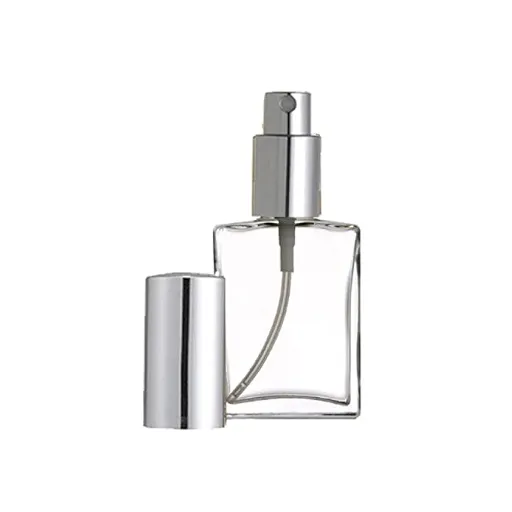
This is how you can make the most out of your 1.0 oz fragrance. Apply it to pulse points, such as the wrists, neck, and behind the ears, where body heat intensifies the fragrance projection. Layering scents with matching body products, such as lotions or shower gels, can extend the life of a perfume by several hours. By storing it in a cool, dry place away from direct sunlight, the perfume retains its best quality over time. Avoid overuse; a light spray of pleasing fragrance lasts through hours, thereby making every single drop count from your 1.0 oz bottle.
Proper Storage Techniques
I usually keep my perfume in a cool, dry spot, away from sunlight and humidity, as these elements can deteriorate the fragrance composition over time. I also never place it near a heat source or in a location like the bathroom, due to temperature variations and moisture, which would compromise quality. If one could make it a habit, always closing the bottle really tight after use to minimize oxidation and evaporation would be great for intent to preserve its scent.
Layering Fragrances for Enhanced Scent
Layering wears the very soul of personalization into the somewhat faint scent. It is generally used in combinations of complementary products, such as scented gels, lotions, or perfumes from the same family or sharing agreeable notes. Ideally, start with a lightly scented base shower gel or cream to keep things simple. When done right, its lightly scented base juxtaposes nicely with a more intense perfume or Eau de Parfum. It must not be that one scent fights with another; the potential for balance is paramount and appreciated in its own way. Layering strengthens the fragrance after which it carries forth through the day.
Exploring Different Packaging Options: Rollerballs vs. Sprays
Rollerballs and sprays differ in application, portability, dosage control, fragrance longevity, and suitability for travel.
| Key Point | Rollerballs | Sprays |
|---|---|---|
| Application | Precise | Wide coverage |
| Portability | Compact | Bulkier |
| Dosage | Controlled | Less precise |
| Longevity | Moderate | Longer |
| Travel | TSA-Friendly | Conditional |
Reference Sources
-
How Big is 1 Ounce Perfume? – This blog explains the size of a 1-ounce perfume bottle in milliliters and provides practical comparisons.
-
How Big is 1 oz Perfume? – Offers a detailed comparison of 1 oz perfume to everyday items like a shot glass.
-
Exploring Perfume Bottle Sizes: A Comparative Analysis – Provides a comprehensive perfume bottle size chart, including 1.0 oz as a standard small size.
-
LaBelle’s Guide to Perfume Sizes: How Long Do They Last? – Discusses the practicality and longevity of 1.0 oz perfume bottles.
-
Understanding the Contents: How Big is 1 oz of Perfume? – Explains the volume of 1 oz perfume in milliliters and its significance.
Frequently Asked Questions (FAQs)
How big is a 1 oz perfume bottle?
A 1 oz perfume bottle is about 30 ml in volume. This size is often preferred by those who want to experiment with a fragrance before making a larger purchase. These bottles contain just enough scent for everyday use yet are still quite portable.
How long will a 1 oz bottle of perfume last?
The duration of a 1-oz bottle of perfume depends significantly on its use, including how often and how many sprays it is used. The spray can last from a few weeks to several months, depending upon the regularity of application.
What are the different sizes available for perfume bottles?
Perfume bottles come in various sizes like 1 oz (30 ml), 1.7 oz (50 ml), 3.4 oz (100 ml), as well as bigger ones. Each size serves different requirements, such as travel, presentation, or everyday home use.
How do I determine the suitable size of the perfume bottle for my needs?
When deciding on the size of the perfume bottle, consider how frequently you use the fragrance and whether you plan to travel with it. If you wear it sparsely, a 1 oz bottle would be perfect for you; others who wear it regularly might opt for a larger bottle at a better price.
How do I keep my 1 oz bottle of perfume?
To maintain the condition of your perfume, store your 1-oz bottle in a cool, dark place, protected from direct sunlight and temperature fluctuations. It ensures the fragrance retains its original scent and lasts longer.

